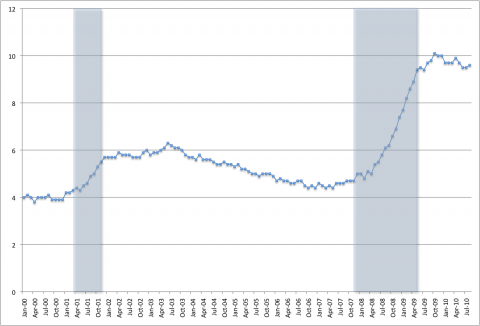The Recession Officially Ended Last June
So says the National Bureau of Economic Research’s Business Cycle Dating Committee -- a group of economists charged with officially determining whether the
Jul 31, 2020364.9K Shares8.2M Views
So saysthe National Bureau of Economic Research’s Business Cycle Dating Committee — a group of economists charged with officially determining whether the economy is in a state of expansion or contraction:
“„The Business Cycle Dating Committee of the National Bureau of Economic Research met yesterday by conference call. At its meeting, the committee determined that a trough in business activity occurred in the U.S. economy in June 2009. The trough marks the end of the recession that began in December 2007 and the beginning of an expansion. The recession lasted 18 months, which makes it the longest of any recession since World War II. Previously the longest postwar recessions were those of 1973-75 and 1981-82, both of which lasted 16 months.
“„**In determining that a trough occurred in June 2009, the committee did not conclude that economic conditions since that month have been favorable or that the economy has returned to operating at normal capacity. Rather, the committee determined only that the recession ended and a recovery began in that month. **
“„A recession is a period of falling economic activity spread across the economy, lasting more than a few months, normally visible in real GDP, real income, employment, industrial production, and wholesale-retail sales. The trough marks the end of the declining phase and the start of the rising phase of the business cycle. Economic activity is typically below normal in the early stages of an expansion, and it sometimes remains so well into the expansion.
Of course, the fact that the recession technically ended means little to the millions of businesses and workers still suffering. But now we can officially gauge how far behind economic growth the labor-market recovery is trailing:
Employment never returned to where it was after the eight-month 2001 recession, caused by the stock and tech bubbles: The unemployment rate continued to tick up for two years after that recession’s technical end, and dwindled down only slowly. And now, the jobs gap is even greater.

Hajra Shannon
Reviewer
Hajra Shannona is a highly experienced journalist with over 9 years of expertise in news writing, investigative reporting, and political analysis.
She holds a Bachelor's degree in Journalism from Columbia University and has contributed to reputable publications focusing on global affairs, human rights, and environmental sustainability.
Hajra's authoritative voice and trustworthy reporting reflect her commitment to delivering insightful news content.
Beyond journalism, she enjoys exploring new cultures through travel and pursuing outdoor photography
Latest Articles
Popular Articles
